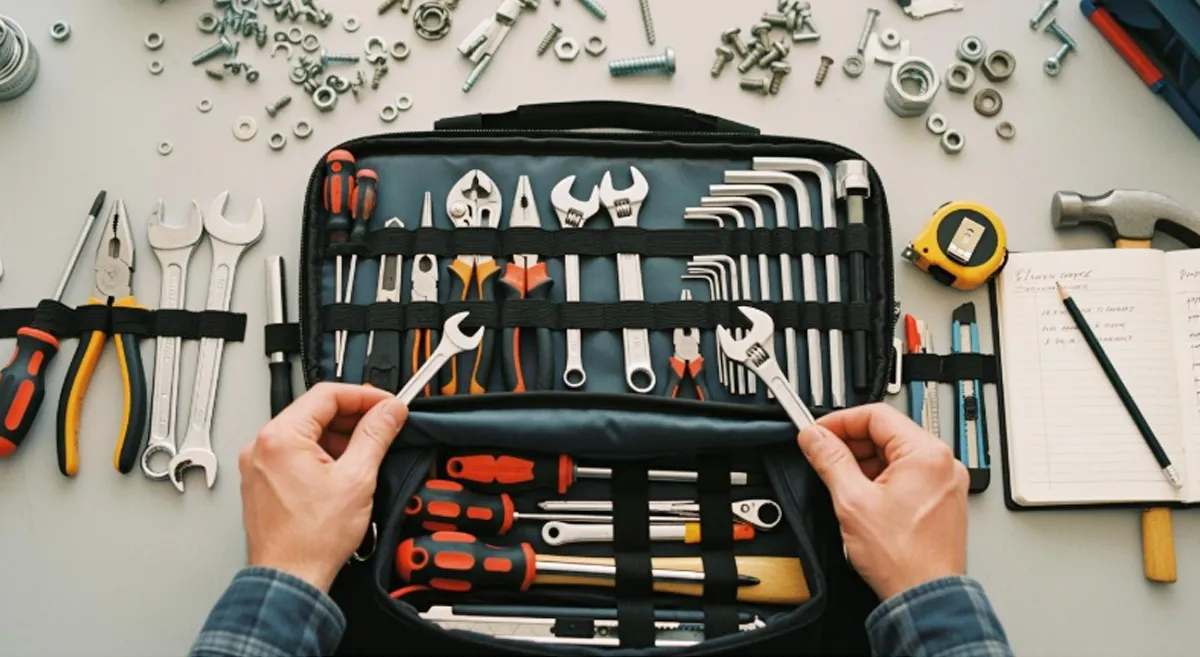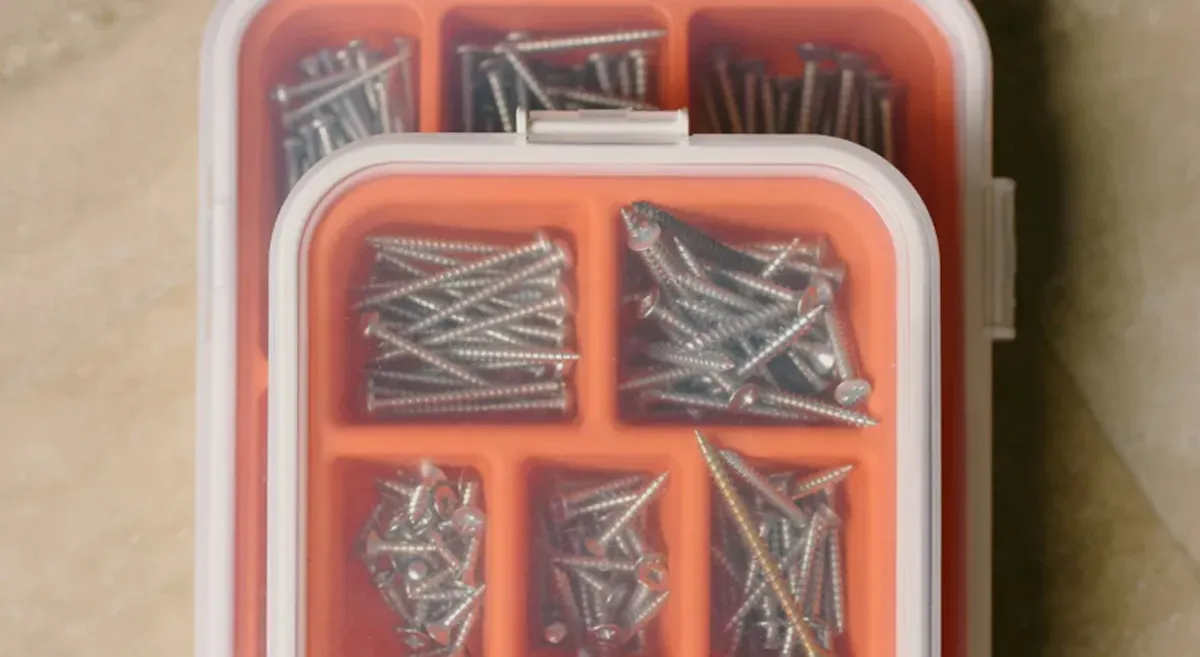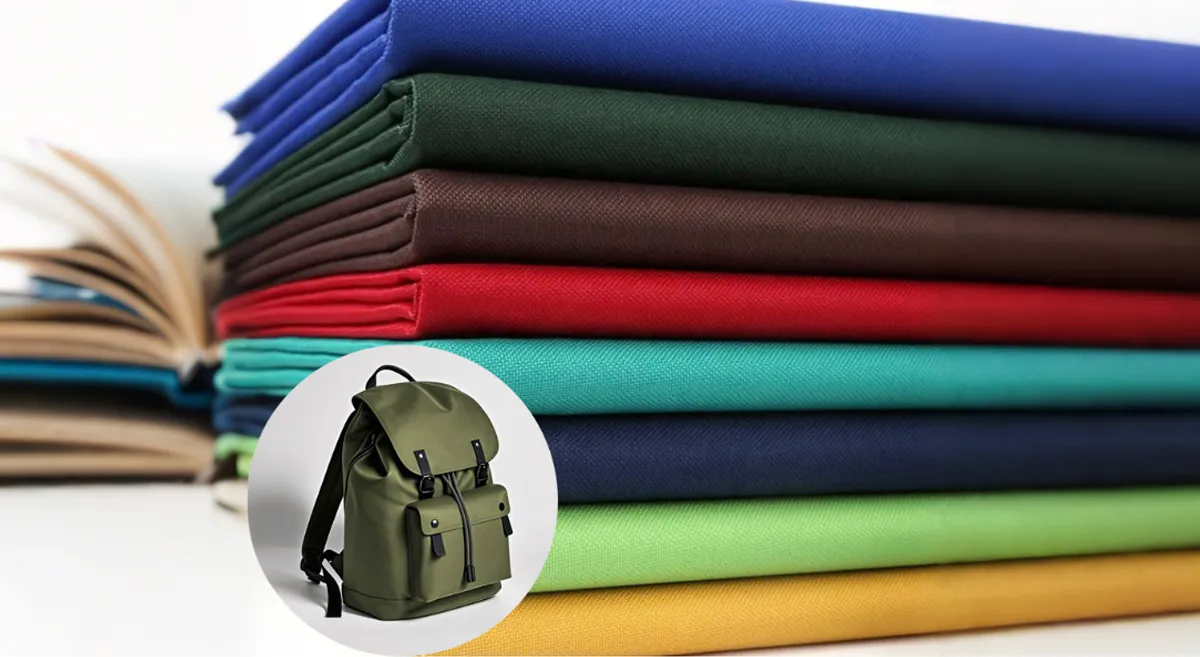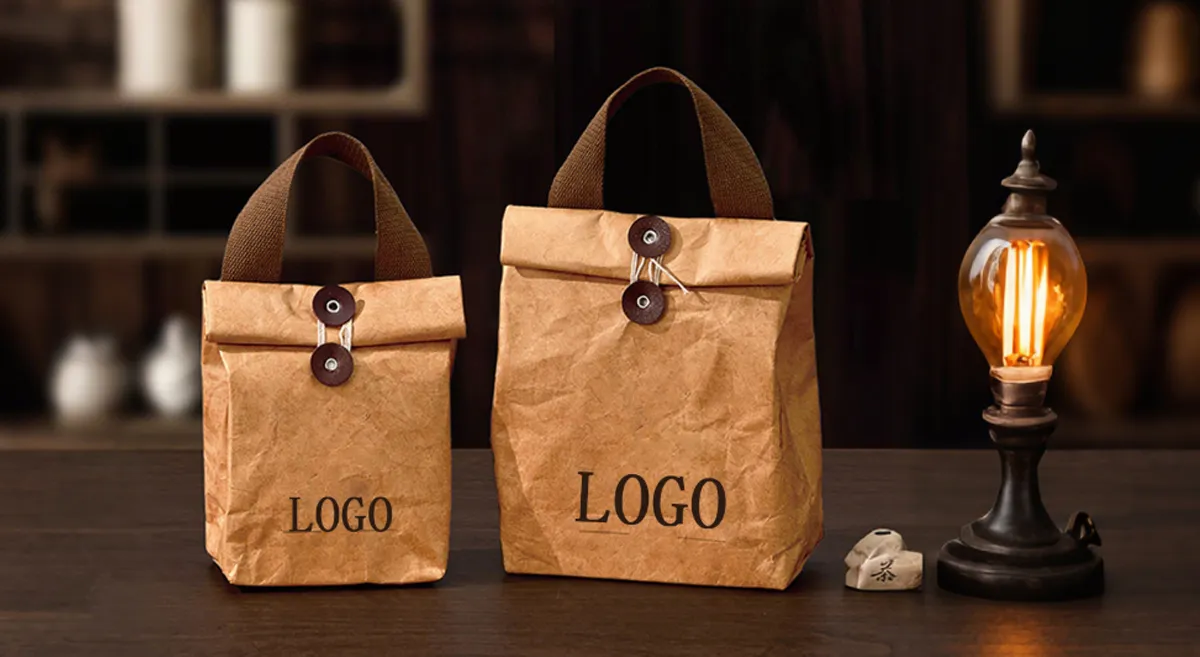
You want to know how to organize a tool bag so you can work faster and feel less stressed. Maybe you dig through your bag and waste time searching for the right wrench or screwdriver. A neat tool bag helps you find what you need in seconds, keeps your tools safe, and shows that you care about your work. Take a moment and think—does your current setup help you or slow you down?
Key Takeaways
- Keeping your tool bag neat saves time and lowers stress. You can find your tools fast and work better.
- Organizing your tools helps protect them. This stops damage and makes them last longer.
- A clean tool bag keeps you safe. You avoid getting hurt and look professional to others.
- Put the tools you use most in easy spots. This helps you work faster and smoother.
- Use dividers and compartments to separate your tools. This stops them from getting tangled and helps you find them quickly.
- Always put your tools back in their right place after using them. This keeps your bag neat and stops you from losing tools.
- Pick a tool bag with compartments, not just one big space. This helps you keep things tidy and not get confused.
- Clean and check your tools often. This keeps them working well and ready for any job.
Why Organization Matters
Efficiency on the Job
You know how frustrating it feels when you dig through your tool bag and can’t find what you need. A messy bag slows you down and makes every job harder. When you organize your tools, you save time and keep your focus on the task. You can use the same ideas you use for garage tool storage in your tool bag. Here are some ways organization helps you work faster:
- A spacious and organized tool bag gives each tool its own spot, so you grab what you need right away.
- You avoid frustration and wasted time because you can see your tools at a glance.
- Upgrading to a better-organized tool bag means you spend less time searching and more time working.
If you treat your tool bag like your garage tool storage, you’ll notice how much smoother your day goes. You get jobs done quicker, and you feel less stressed.
Protecting Your Tools
Your tools are valuable. You want them to last as long as possible. When you toss everything into one big pocket, you risk damaging your gear. You can use the same care you use for garage tool storage to protect your tools in your bag. Here’s what can happen if you don’t organize:
- Tools can develop cracks, dings, or weaknesses if you don’t keep track of them.
- If you put too much pressure on your tools, you might break them or even hurt yourself.
- Damage you don’t notice can cause your tools to fail when you need them most.
- If you skip regular maintenance, you might delay projects or make mistakes that cost your company money.
- Poor care can hurt your reputation with clients and coworkers.
When you use effective garage tool storage methods in your tool bag, you keep your tools safe and ready for action.
Safety and Professionalism
A neat tool bag does more than just save time and protect your gear. It keeps you safe and shows others you take your work seriously. Safety studies show that organized tools help you avoid accidents and wasted time. Here’s how:
- You waste less time searching for tools, so you stay focused and alert.
- You save money because you don’t lose or misplace tools.
When clients see your organized tool bag, they trust you more. They know you care about your work and their project. Your coworkers respect you, and you feel proud of your setup. A tidy tool bag, just like organized garage tool storage, shows you’re a true professional.
How to Organize a Tool Bag
Prioritize Frequently Used Tools
You want to grab your go-to tools fast, right? Start by thinking about which tools you use most on every job. These might be your tape measure, screwdriver, pliers, or cordless drill. Place these high-use tools in the most accessible spots, like the exterior pockets or top compartments of your tool bag. This way, you reach for them without digging around.
Here’s a simple way to sort your tools:
- Group your tools by how often you use them.
- Put the tools you use every day in the easiest-to-reach pockets.
- Store mid-use tools in inside loops or slots.
- Tuck away rarely used tools in zippered pouches or deeper sections.
Tip: Make a quick list of your most-used tools before you start organizing. This helps you decide where each tool should go.
If you work in a specific trade, your list might include things like impact drivers, hammers, tape measures, or marking tools. Keeping these at your fingertips saves time and keeps your workflow smooth. When you know how to organize a tool bag based on frequency of use, you work smarter, not harder.
Use Compartments and Dividers
A tool bag with smart compartments and dividers makes your life easier. Each pocket, loop, or divider has a job. Small pockets hold screwdrivers and pliers. Tool loops keep hammers and drills secure. Zip compartments protect your phone, keys, or small parts.
Here’s a quick table to show what each compartment can do:
| Compartment Type | Best For |
|---|---|
| Small Pockets | Screwdrivers, pliers, small parts |
| Tool Loops | Hammers, tape measures, drills |
| Zip Compartments | Valuables, fasteners, small bits |
Customizable dividers let you adjust the space for different tools. You can move them around to fit your needs. This setup keeps everything in place, so tools don’t bang into each other or get damaged. When you use compartments and dividers, you find what you need fast and keep your tools safe.
Note: A well-organized bag with dividers also helps balance the weight. This makes carrying your bag easier and protects your back.
Return Tools to Designated Spots
You finish a task, and it’s tempting to toss your tool back in the bag anywhere. Don’t do it! Always return each tool to its designated spot. This habit keeps your bag organized and stops you from losing tools.
Try these steps:
- Set up a routine to put tools back right after you use them.
- Only take out the tools you need for the job.
- Do a quick check at the end of the day to make sure everything is in its place.
When you return tools to their spots, you avoid wasting time searching for them later. You also reduce the risk of leaving tools behind at a job site. Over time, this routine becomes second nature. You’ll notice fewer lost tools and a smoother workday.
Learning how to organize a tool bag is not just about where you put things. It’s about building habits that save you time, protect your gear, and help you look like a pro on every job.
Avoid Large Open Bags
You might think a big open tool bag gives you more space and makes it easy to toss in all your gear. But these bags often cause more problems than they solve. When you use a large open bag, your tools can pile up and mix together. This makes it hard to find what you need, especially when you are in a hurry.
Here are some common problems with large open tool bags:
- You lose track of small items because they sink to the bottom.
- You waste time digging for the right tool, which can slow down your work.
- Tools overlap and get tangled, making it tough to grab just one.
- The bag can feel cluttered and messy, which leads to frustration.
You want to look and work like a pro. A messy bag does not help. Many professionals have shared stories about losing time searching for keys or small parts in a cluttered bag. This chaos can make your day harder and even cause you to leave tools behind.
Let’s compare large open tool bags with organized alternatives:
| Tool Bag Type | Advantages | Disadvantages |
|---|---|---|
| Large Open Tool Bags | Easy access to tools, less downtime, all tools close at hand | Can lead to overcrowding and tool loss |
| Organized Alternatives | Individual pockets for quick access, tailored for specific projects | May require more time to set up |
If you want to know how to organize a tool bag, start by choosing one with compartments, pockets, and dividers. These features help you keep everything in its place. You will spend less time searching and more time getting the job done. Your tools stay safe, and your bag looks neat every time you open it.
Tip: Pick a tool bag that matches your work style. If you carry lots of small parts or specialty tools, look for bags with adjustable dividers or removable trays. This makes it easy to keep your setup organized and ready for any job.
Tool Selection
Assess Daily Needs
You want your tool bag to work as hard as you do. The first step is to think about what you need every day. If you grab the same tools for most jobs, those should go in your bag first. You can look at your daily tasks and decide which tools help you finish them faster. This habit keeps your tool bag light and easy to carry.
Here are some ways tool selection impacts your tool bag organization and efficiency:
- A well-organized tool bag saves you time because you spend less time searching for tools.
- Multiple compartments, pockets, and loops help you keep everything in order.
- Better organization keeps your workflow smooth and stops tools from getting damaged.
- Tool bags with special compartments for small items help you stay organized.
- An organized tool bag helps you work faster and keeps your tools safe from loss or damage.
If you use garage tool storage at home, you know how nice it feels to have everything in its place. You can use the same idea for your tool bag. Pick the tools you use most and give them a spot where you can reach them quickly. This strategy helps you stay focused and finish jobs without delays.
Tip: Make a checklist of your daily tools. You can update it when your jobs change or when you add new tools to your collection.
Minimize Overpacking
You might feel tempted to pack every tool you own, just in case. Overpacking makes your bag heavy and messy. You want to avoid carrying extra weight and wasting time looking for the right tool. The best way to keep your tool bag organized is to bring only what you need.
Try these strategies to minimize overpacking:
- Prioritize essential tools and accessories for the tasks you plan to do.
- Think about the space in your tool bag and choose only the items you need.
- Review your tool bag often and remove tools you don’t use.
- Keep your bag simple, so you can find everything quickly.
If you use garage tool storage, you know that clutter makes it hard to find things. The same rule works for your tool bag. When you keep your bag neat, you protect your tools and make your work easier. You also look more professional when your bag is tidy and organized.
Note: A lighter tool bag is easier to carry and helps you avoid back pain. You can move faster and work longer without feeling tired.
You can use garage tool storage ideas to keep your tool bag in top shape. Pick the right tools, avoid clutter, and check your bag often. These habits help you stay organized and ready for any job.
Small Item Storage

Keeping small items organized in your tool bag can feel tricky. You know how easy it is for screws, bits, and fasteners to get lost at the bottom of your bag. When you use smart storage solutions, you save time and keep your work area neat. You can use the same ideas you use for garage tool storage to manage small items in your tool bag.
Use Containers for Fasteners
You want to grab the right fastener without digging through a pile. Plastic compartment boxes work great for this. These boxes have adjustable dividers, so you can separate nails, screws, and washers. The clear design lets you see what’s inside, so you find what you need fast. If you have a lot of fasteners, large storage bins made from tough plastic help you keep everything together. You can stack these bins in your garage tool storage or carry them to the job site. This setup keeps your fasteners safe and easy to reach.
Tip: Label each compartment with the type or size of fastener. You’ll never mix up your parts again!
Organize Screws and Bits
You want your screws and bits ready for action. Professionals use smart systems to keep these items sorted and easy to grab. Check out this table for some top tips:
| Tip | Description |
|---|---|
| Modular Storage Systems | Use rugged modular storage systems like Milwaukee’s Packout to customize your storage needs effectively. |
| Multi-Tools | Opt for multi-tools, such as a multi-bit screwdriver, to save space and cost while having multiple tools available. |
| Foam Inserts | Implement foam inserts in tool boxes to ensure every tool has a designated spot, making it easy to identify missing items. |
| Labeling | Utilize labels on drawers and tool boxes to enhance organization and accessibility for all users. |
You can use modular storage systems in your garage tool storage and your tool bag. Foam inserts help you spot missing bits right away. Multi-tools save space, so you don’t need to carry every single screwdriver. When you label your drawers and boxes, you make your setup easy for anyone to use.
Incorporate Trays for Small Tools
Small tools like Allen wrenches, utility knives, and measuring tapes need their own space. Trays with divided sections keep these items from getting lost. You can slide a tray into your tool bag or use it in your garage tool storage. Some trays have handles, so you can carry them from your garage to the job site. When you use trays, you keep your bag tidy and find your tools in seconds.
Note: Check your trays and containers every week. Make sure everything is in its place and nothing is missing.
You can use garage tool storage ideas to keep your tool bag organized. When you use containers, trays, and smart systems, you work faster and protect your gear. You look like a pro every time you open your bag.
Choosing the Right Bag
Picking the right tool bag can make your workday smoother. You want a bag that fits your tools, matches your style, and stands up to tough jobs. Let’s look at some popular choices and see what works best for you.
Modular Backpacks
Modular backpacks give you flexibility and organization. You can carry them on your back, which keeps your hands free. These bags come loaded with features that help you stay organized and ready for anything. Check out this table to see what sets modular backpacks apart:
| Feature | Description |
|---|---|
| Tool Pockets | 37 pockets, some zippered for security |
| Tool Retaining Loops | 21 loops to keep tools in place |
| D-rings | Attach extra gear easily |
| FidLock Mounting Points | Snap tools and accessories on and off fast |
| MOLLE Webbing | Rows for clips and adapters, inside and outside |
| Weight Capacity | Holds up to 33 lbs of tools |
| Removable Tool Panel | Take just what you need to the job |
| Adjustable Opening Width | Open wide or narrow for easy access |
| Waterproof Molded Bottom | Keeps tools dry, even on wet ground |
| Laptop Compartment | Fits laptops up to 15 inches |
You get lots of pockets and loops, so every tool has a home. The waterproof bottom protects your gear from rain or spills. If you need to bring a laptop for work, there’s a safe spot for it. Modular backpacks work great for pros who move between job sites or need to carry many tools.
Tote and Rolling Bags
Tote and rolling bags offer different benefits. You might choose a tote for quick jobs or when you want to grab your tools and go. Rolling bags help when you have heavy loads or need to cross long distances.
- Rolling bags make moving heavy tools easy. You can pull them over rough ground or up ramps.
- Many rolling bags have strong handles and organized compartments. You find your tools fast and keep everything neat.
- Totes work well for light jobs. You can carry them by hand and reach your tools quickly.
- When you pick a bag, think about how much you need to carry, how far you travel, and what feels comfortable.
- Custom options let you match your bag to your workflow. You get more value when your bag fits your needs.
If you use garage tool storage at home, you know how important it is to keep things organized. The same idea helps you choose the right tool bag for work.
Material and Durability
You want your tool bag to last. The material makes a big difference. Some bags use leather, which resists scratches and wears well over time. Leather feels tough and looks professional. Other bags use high-denier nylon, like 1000D ballistic nylon. This material is light, strong, and keeps water out.
- Leather stands up to rough use and protects your tools.
- High-denier nylon gives you a lighter bag that still keeps your gear safe from rain.
- Both materials work well for pros who need durability and reliability.
When you pick a tool bag, think about how you use garage tool storage. You want something that protects your tools and stays strong, job after job.
Tip: Check the seams and zippers before you buy. Strong stitching and sturdy zippers help your bag last longer.
Regular Maintenance
Clean and Inspect Tools
You want your tool bag to work for you every day. Regular cleaning and inspection keep your tools in top shape. Start by emptying your bag and laying out every tool. Wipe off dirt, dust, and grease. Use a soft cloth for metal surfaces. Check for rust or damage. If you spot a problem, fix it right away or set the tool aside for repair.
You can make cleaning part of your daily routine. At the end of each job, take a few minutes to look over your tools. This habit helps you catch issues before they get worse. Clean tools last longer and work better. You also protect your investment and avoid costly replacements.
Here are some benefits you get from regular maintenance:
- You keep your tools organized and easy to find.
- You protect your tools from damage, so they last longer.
- You show clients and coworkers that you care about your work.
- You reduce strain on your body by keeping your bag light and balanced.
- You stay prepared for any job, which builds trust with your team.
Tip: Set a reminder on your phone to clean and inspect your tool bag once a week. This simple step keeps your gear ready for action.
Update Organization System
Your work changes over time. You pick up new tools, and your jobs may require different gear. Updating your organization system helps you stay efficient. Review your tool bag setup every month. Ask yourself, “Do I use all these tools?” Remove anything you don’t need. Add new pockets or dividers if your bag feels crowded.
Try these steps to keep your system fresh:
- Make a list of the tools you use most often.
- Rearrange pockets and compartments to match your workflow.
- Swap out old trays or containers for new ones if they get worn.
- Test your bag’s weight and balance. Adjust straps or harnesses for comfort.
A well-organized tool bag makes your day easier. You spend less time searching and more time working. You also protect your back and shoulders by keeping the weight balanced. Many professionals use ideas from garage tool storage to update their tool bags. This approach helps you stay organized at home and on the job.
Note: If you upgrade your tool bag or add new tools, take time to rethink your layout. A small change can make a big difference in your workflow.
A regular maintenance routine keeps your tool bag clean, organized, and ready for anything. You look professional, work faster, and protect your tools for years to come.
Customization and Upgrades
Personalize Layouts
You want your tool bag to fit your style and workflow. Personalizing the layout helps you work faster and keeps you organized. Start by looking at how you use your tools every day. Do you reach for your pliers first? Maybe you grab your tape measure all the time. Place those tools in the most accessible spots. You can move pockets, swap dividers, or add extra loops. Some tool bags let you adjust the inside panels. You get to decide where each tool goes.
Try these steps to make your layout work for you:
- List your most-used tools.
- Arrange pockets and loops so you can reach them quickly.
- Use color-coded tags or labels for easy identification.
- Test your setup on the job. Change it if something feels off.
Tip: If you use garage tool storage at home, you know how nice it feels when everything has a spot. Use the same idea for your tool bag. Your tools will always be ready.
A personalized layout saves you time. You spend less energy searching for tools. You also show clients and coworkers that you care about your work.
Add Specialized Holders
You can upgrade your tool bag with specialized holders. These holders keep your gear safe and easy to grab. Magnetic strips hold screwdrivers and bits. Elastic bands secure small tools like utility knives or Allen wrenches. Some bags have built-in holders for drills or tape measures. You can also add clip-on pouches for fasteners or small parts.
Here’s a table with popular specialized holders and what they do:
| Holder Type | Best For |
|---|---|
| Magnetic Strip | Bits, screwdrivers |
| Elastic Band | Utility knives, wrenches |
| Clip-on Pouch | Fasteners, small parts |
| Drill Holster | Cordless drills |
| Tape Measure Clip | Tape measures |
You can buy these holders or make your own. Velcro straps work well for odd-shaped tools. Small containers help you organize screws and nails. If you carry a laptop or tablet, look for padded sleeves. These upgrades protect your gear and make your bag more useful.
Note: Test new holders before you head to a job site. Make sure they fit your tools and stay secure.
Customizing your tool bag helps you work smarter. You get a setup that matches your needs. You also keep your tools safe and easy to find. When you upgrade your bag, you feel more confident and ready for any challenge.
Conclusion
You now know how to organize a tool bag for better speed, safety, and professionalism. Start today—sort your tools, use compartments, and keep your bag clean. You’ll work faster and protect your gear. Ready for a custom solution? As a professional tool bag manufacturer, we design and produce high-quality tool bags for professionals like you. We provide OEM and ODM services to bring your ideas to life. Contact us today to create your personalized tool bag and take your gear to the next level!
FAQ
How often should you reorganize your tool bag?
You should check your tool bag every week. Clean out old items and put tools back in their spots. This habit keeps your bag tidy and ready for any job.
What is the best way to store small parts?
Use small containers or trays with dividers. Label each section for screws, nails, and bits. This method helps you find what you need fast and keeps everything neat.
Can you wash your tool bag?
Most fabric tool bags can be wiped with a damp cloth. For tough stains, use mild soap and water. Always let your bag dry completely before loading your tools back in.
How do you keep your tool bag from getting too heavy?
Only pack the tools you use every day. Remove extras and check your bag often. A lighter bag is easier to carry and helps you avoid back pain.
What should you do if your tool bag breaks?
Stop using it right away. Move your tools to a safe spot. Repair the bag if possible, or replace it with a new one to protect your gear.
Is it better to use a backpack or a tote for tools?
Choose a backpack if you walk a lot or need your hands free. Pick a tote for quick jobs or when you want easy access. Think about your work style before you decide.
How can you stop tools from rusting inside your bag?
Wipe your tools dry before putting them away. Use silica gel packs to absorb moisture. Store your bag in a dry place to keep your tools rust-free.
What is the best way to label your tool bag compartments?
Try color-coded tags or simple labels. Write the tool name or type on each pocket. This trick helps you find tools quickly and keeps your bag organized.




